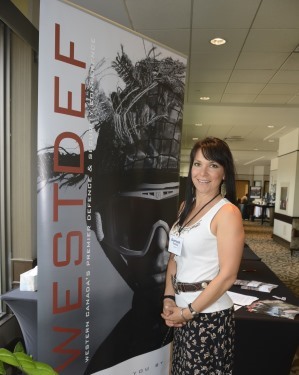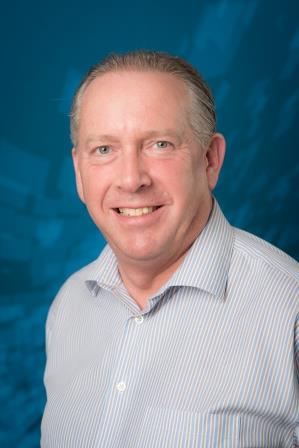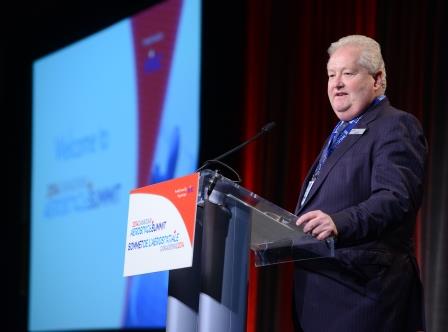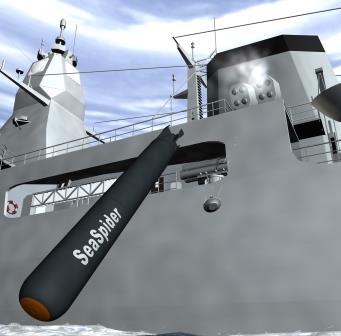When the Western Canadian Defence Industries Association named Denean Tomlin as its president earlier this year, she was very appreciative. But, during relaxed moments, Tomlin jokes about the irony. “I still do pretty much everything I did before,” says the highly-visible industry veteran and WESTDEF defence show organizer with a laugh. “. . . But, ‘president’, just has a nicer ring.”
Like most jocular comments, Tomlin’s remark comes with an underlying hard edge. WCDIA’s acknowledgement of the growing importance of her role, signals a tacit understanding of the Western Canadian aerospace and defence industry’s increasing need to be heard, especially at the higher echelons of government. Developments around the new Defence Policy Review, changes on the political front and a rebounding oil sector, are all creating new opportunities and challenges as well. But, defence contractors are having a tougher time cashing in.
A PACKED AGENDA FOR WESTDEF
The Defence Policy Review breaks new ground in several areas that affect Western Canadian sector stakeholders. For one, the Canadian government’s acknowledgement of the growing importance of space-based systems in defence, provides continued momentum to MDA, a British Columbia-based leader in satellite technology. The RADARSAT Constellation Mission (RCM) is a 2018 space launch mission that will consist of a three-spacecraft fleet of Earth observation satellites. With satellites smaller than RADARSAT 2, the RCM will provide new applications made possible through the “constellation approach”, as well as continuing to provide C-band radar data to RADARSAT-2 users. Improvements include more frequent area coverage of Canada and reduced risk of a service interruption. The launch of the three satellites that will form the constellation is scheduled for some time in 2018 and will be carried out by Elon Musk’s SpaceX Company on a Falcon 9 rocket.
The RADARSAT Constellation Mission (RCM) is a 2018 space launch mission that will consist of a three-spacecraft fleet of Earth observation satellites. With satellites smaller than RADARSAT 2, the RCM will provide new applications made possible through the “constellation approach”, as well as continuing to provide C-band radar data to RADARSAT-2 users. Improvements include more frequent area coverage of Canada and reduced risk of a service interruption. The launch of the three satellites that will form the constellation is scheduled for some time in 2018 and will be carried out by Elon Musk’s SpaceX Company on a Falcon 9 rocket.
According to Norman Hannaford, MDA’s vice-president and general manager (surveillance and intelligence), MDA is already working on 20 projects with DND. The RADARSAT Constellation Mission (RCM), comprised of three earth observation satellites, will provide a flexible, broad-based maritime and land surveillance system to Canada.
RCM FROM MDA TO PROVIDE GREATER ARCTIC SURVEILLANCE
The RADARSAT Constellation Mission’s launch coincides with the growing importance of Arctic surveillance, during a time when Russia is increasingly making its presence felt in the high north. According to Hannaford, space-based radar systems, which can penetrate cloud cover, are ideal tools for monitoring this vast region.
Information drawn from the RADARSAT Constellation Mission will be meshed with data from imaging radar that MDA provides to Canada’s CP-140 maritime patrol aircraft, and sent to future Arctic Offshore Patrol ships, in cases where a closer look in a specific area is needed. RCM data will also be key to monitoring climate change developments that could have defence implications. These include melting polar ice caps, which could open new sea-lanes to foreign traffic.
And, MDA also developed the Saphire satellite, which monitors other countries’ activities in space, a crucial, but largely undiscussed and unrecognized Canadian capability, during a period of increased militarization of this new frontier. MAGELLAN BUILDS F-35 COMPONENTS
MAGELLAN BUILDS F-35 COMPONENTS
Western Canada’s aerospace sector could also be a beneficiary of the new Defence Policy Review, which projects that annual defence spending will increase during the coming decade by nearly 50% from $18.9 billion to $32.7 billion. The challenge is that while the DPR includes a commitment to acquire 88 new jets, it provides little clarity as to who will supply them.
That uncertainty isn’t helping anyone says Scott McCrady, a program director at Magellan Aerospace, a key supplier of tail assemblies to Lockheed Martin’s F-35 Lightning II fighter program. Last year Magellan produced 22 units at its Winnipeg facility. It expects to produce 30 more in 2017, but that is just touching the tip of the iceberg says McCrady. “There are a lot of F-35s flying around,” says McCrady. “But there will be many more in the coming years. There are 400 pilots trained on the aircraft and 4,000 maintainers. They will need to be kept busy.”
The big question for Magellan and other Western Canadian aerospace suppliers relates to how Harjit Sajjan, the Minister of National Defence, will act on his thinly veiled threat to review Canada’s intended Super Hornet purchase, in the wake of Boeing’s trade actions against Canadian-based Bombardier.
McCrady, who is chair of the Canadian Joint Strike Fighter Industry Group, is a big believer in the old PR wisdom that when the enemy is shooting itself in the foot, you don’t need say anything. So when asked about the controversy for this report, he astutely, refused to wade into the Boeing/Bombardier imbroglio. “Canada should just get on with a competition to determine which is the best fighter,” was his only comment. “These distractions don’t help anyone.”
AIAC PACIFIC TO HOST ADSE
British Columbia’s long coast line makes it a natural place to host Canada’s Pacific Naval Fleet, but some of those same features make it a natural home base for a variety of air defence capabilities. Not surprisingly then, the province of B.C. has thus sprouted a significant aerospace industry whose capabilities are showcased each year at the Abbotsford Air Show and at ADSE
(Aerospace, Defence & Security Expo) which is held concomitantly with the airshow. In 2017, aerospace and defence industry players will gather in August in scenic Abbotsford, B.C. to talk about their industry. Abbotsford happens to be the home of Cascade Aerospace where that company performs critically important work on the RCAF’s fleet of C-130J aircraft. And, according to Statistics Canada, military aircraft maintenance repair and overhaul services were Western Canada’s top defence industrial activity in recent years.
“BC’s aerospace industry is well integrated into what we do as a country,” said Jim Quick president of the Aerospace Industries Association of Canada, which has been operating a British Columbia branch for the past several years. “In fact, many local companies are doing manufacturing and ISS work that is global in nature.”
branch for the past several years. “In fact, many local companies are doing manufacturing and ISS work that is global in nature.”
Quick acknowledges the importance of projected Defence Policy Review procurements, including next generation multi-mission aircraft (CP-140 replacement), new air-to-air tanker-transport (to replace the CC-150 Polaris) and the fighter jets. However, he also refused to comment on the Boeing-Bombardier controversy beyond noting that “trade disputes are a lose-lose proposition.”
One of Western Canada’s biggest defence industrial capabilities is the in-service support work that key players do on a wide variety of platforms. One example is Standard Aero, which recently inked a $45 million deal to do propulsion sustainment work on the T-56 engines which are used in the RCAF’s fleet of CC-130J transports and CP-140 Aurora maritime surveillance aircraft.
According to Fritz Wolkenstein, Standard Aero’s vice-president (general manager), the new work, coupled with another win related to T56 maintenance depot provider work for the US Navy, will keep the company’s 225 defence sector employees (out of 275 overall) busy. “Our Western Canada location gives us a leg up as a potential ITB partner, says Wolkenstein. “But we are also continuing to seek out new work on the commercial front.”
KF AEROSPACE PROVIDES KEY PILOT TRAINING SERVICES
One of Western Canada’s most visible defence sector players to RCAF people is KF Aerospace, a prime contractor for the Canadian Armed Forces CFTC (Contracted Flying Training Centre), where all RCAF pilots go for their ab initio (initial) training. The company’s offerings took a big step up earlier this year when it won a contract to supply a Bell 207 Level “flight training device.” This simulator (built by Frasca International) will enable KF Aerospace to conduct to primary, basic rotary wing and multi-engine pilot training on the Bell 206 helicopter.
KF Aerospace’s MRO facility, which is based in Kelowna, also provides maintenance support for the RCAF’s CC-115 Buffalo and CC-138 Twin Otter fleets. However, according to Bryan Akerstream, the company’s director (business development) sector players confront a variety of ever-changing challenges. These include a North America wide skilled labor shortage, which is forcing KF Aerospace to grow cautiously.
The Defence Policy Review also comes with important implications for Western Canada as it applies to the Royal Canadian Navy, which tends to be roughly evenly deployed between the two coasts. Canada has the world’s longest coastline, the second largest continental shelf, and the fifth largest Exclusive Economic Zone. However, protecting those assets from encroachments won’t be easy. The DPR thus acknowledges the need for a naval force that is designed and structured to operate in some of the most extreme ocean conditions. The question is how many will be based in western Canada and which of those capabilities will be produced in the region.
Leading the way in naval shipbuilding on the West Coast is Seaspan Shipyards, which has been charged with building the non-combat vessels on the National Shipbuilding Strategy program. And, naturally Seaspan has allied itself with a raft of key west coast partners like Babcock and Thales to assist it in carrying out its important mission for the Canadian government.
ATLAS ELEKTRONIK TO DEVELOP SEASPIDER IN CANADA A relatively new but rapidly growing denizen of Canada’s West Coast defence community is Atlas Elektronik Canada, which according to Rick Gerbrecht, its president and CEO, will be supplying radio and datalink technology to the JSS (Joint Support Ship) program, and possibly for the proposed Canadian Surface Combatant ships, which are slated to be built on the East coast by Irving Shipbuilding. Atlas also recently inked a contract to supply antennae for Arctic Offshore Patrol Ships, the first two of which are currently under construction.
A relatively new but rapidly growing denizen of Canada’s West Coast defence community is Atlas Elektronik Canada, which according to Rick Gerbrecht, its president and CEO, will be supplying radio and datalink technology to the JSS (Joint Support Ship) program, and possibly for the proposed Canadian Surface Combatant ships, which are slated to be built on the East coast by Irving Shipbuilding. Atlas also recently inked a contract to supply antennae for Arctic Offshore Patrol Ships, the first two of which are currently under construction.
Atlas, which is the Canadian subsidiary of a German company, also recently announced that “multi-million dollar” funding had been approved for the final development steps related to the Seaspider “anti-torpedo torpedo.” Atlas is partnering with Magellan Aerospace for development of the rocket motor and warhead sections. The effort will result in significant torpedo defence research and development efforts being undertaken in Canada. Atlas is also working on new initiatives in the mine countermeasures, autonomous underwater vehicles and command & control technologies sectors.
One of the fastest growing naval providers in percentage terms during recent years has been OSI Maritime Systems, a surface, sub-surface and maritime security systems solutions provider. OSI’s innovative software connects a range of GPS, radar, depth, gyro-directional and other stove-piped systems, to make them mesh better together.
According to Ken Kirkpatrick, its president, the company has equipped 20 navies and more than 600 warships with OSI systems. That work, as well as local NSS related initiatives have boosted staffing levels at the Burnaby-based facility from 60 to 140 over the past three years.
OSI’s most visible recent project has been the integrated navigation and tactical system that it is installing on the Resolve Class, a new supply ship being built by Davie Shipbuilding in Quebec out of a retired container vessel (Asterix). But, that’s just the tip of the iceberg says Kirkpatrick. OSI’s recent refocus from supply retrofitting services into the New Build market, has led to work on the Arctic Offshore Patrol Ships as well. OSI, which employs 20 of its staff in Australia, the UK, the US and Malaysia, also continues to steadily grow its export market.
RACE ROCKS EVOLVED FROM THE VIDEO GAME INDUSTRY
Western Canada also has considerable strengths on the land front. These range from shelter providers such as Weatherhaven and Excalibur Shelters, to simulation and training suppliers, one of the sector’s key growth segments. According to Scott Dewis, CEO and co-founder of RaceRocks, to achieve maximum results, learning solutions need to be entertaining. “Canadian Armed Forces recruits have been using technology in their daily lives since they were born,” says Dewis. “The average kid has played 10,000 hours of video games by the time they are 21. So when they do simulations training at DND, they expect the technology to be better and more innovative than what they use at home. Our goal is to give them that.”
RaceRocks provides e-learning solutions to the Royal Canadian Navy, most recently through a partnership with Federal Fleet Services related to the Resolve Class supply ship being built at the Davie Shipyard in Quebec, whose crew Dewis hopes will be the first brought on through the RCN’s future training initiative.
“It’s a great opportunity,” says Dewis. “But we have worked hard. We receive no financial support except low taxes, but have doubled the numbers of employees during the past year, and hope to double it again during the next year.”
WCDIA’s Tomlin, for her part, remains optimistic regarding the opportunities and challenges facing the Western Canadian Defence Industries Association, which has already taken concrete steps to deal with them. These include implementing an expanded board of directors, putting new energy into the organization’s newsletter and organizing monthly “morning coffees” that feature topical industry speakers.
WCDIA, like many Canadian defence sector stakeholders, is also leveraging the growing intersection between defence, law enforcement and homeland security, during a time of increasing asymmetric challenges, by holding TACWEST, a law enforcement conference, which will take place this fall.
15% OF CANADA’S DEFENCE EMPLOYMENT
Another major focus is assessing the Western Canadian aerospace and defence industry’s size, to provide stakeholders with better arguments about the impact of sector programs. Research compiled by CADSI (the Canadian Association of Defence and Securities Industries) released at CANSEC last year suggests that Western Canada and the Arctic account for 15% of the country’s defence employment.
However, Tomlin wants to drill down on those numbers. To do that, she is working with a number of volunteers, including Bruce Gilkes (a past WCDIA chair) who is spearheading the data collection and interview efforts.
“We have a mandate to encourage, support and promote awareness of Western Canadian defence industry capabilities,” says Tomlin. “If we can demonstrate what we are all about it, it will make it a lot easier to get our voices heard.”
By Peter Diekmeyer




